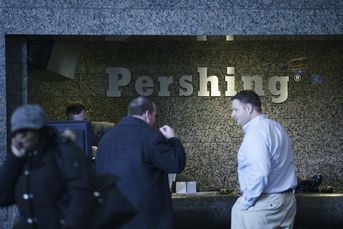Startup robo-advisers grapple with client acquisition costs

Industry watcher Kitces and others say robo-advisers' days may be numbered, but some companies like Personal Capital and SigFig say they can pivot to succeed.
Robo-advisers are often the center of a hot debate: how high are their client acquisition costs and how long will it take them to crash and burn as a result of that price to onboard a new customer.
Industry research suggests robos spend as much as $1,000 on acquiring a new client, but not all of the digital advice providers agree. Many argue their client acquisition costs are not as high as the estimates thrown around — some even say their costs are zero — and for those that are in the $1,000 range, it’s the price paid to attract long-term clients under a sustainable business model.
Industry watcher Michael Kitces, partner and director of research for Pinnacle Advisory Group, said in a recent blog post that direct-to-consumer robo-advisers were dying, but that their technology would live on. In the piece, he writes that competition in this sector of the industry is rising, robo-adviser growth rates are plunging and client acquisition costs may become “fatal” for these online firms.
“It’s not surprising to see many of the early robo-adviser players pivoting in other directions, using their long runway of available dollars to try to find greater growth traction, with at best one or two that might manage to build a viable brand that survives,” Mr. Kitces wrote.
These digital advice providers are pushing back on the criticism of their client acquisition costs, however.
“Assumptions are being made looking at some of the startups out there like Betterment and Wealthfront — they have had a lot of growth and that is starting to level off,” said David Lyon, chief executive of Oranj, a wealth management technology provider that offers robo-like tools to advisers. “But that is just part of a startup growth cycle. I think that looking at it in the silo of the investment industry could be misleading.”
Robo-advisers spend about $300 to $1,000 to acquire a new client, according to a Finametrica report and Morningstar report (some of these companies say that number is drastically inflated, going as far to say they pay $0 to gain a new customer). According to data from the 2014 InvestmentNews Adviser Compensation and Staffing Study, the typical independent advisory firm that participated in the study had client acquisition costs of $4,000, based on the time and money they spent on business development as well as marketing.
Hedgeable, a direct-to-consumer online investment platform provider, and SigFig, which was originally direct-to-consumer and now focuses on enterprise institutions, both say their client acquisition costs are zero.
“We don’t spend money on marketing and brand-building,” said Mike Sha, chief executive of SigFig. “We grow organically but we do not go out and acquire customers by paying for them.”
Instead, SigFig strikes partnerships with firms such as Pershing and Cambridge Savings Bank.
“They have accumulated large well-known brands and have spent billions of dollars building customer bases, so that’s money we don’t have to spend,” Mr. Sha said.
Mike Kane, chief executive of Hedgeable, said his firm also hasn’t spent a dollar on marketing. He also said the company has been growing organically and clients come through referrals.
One of the problems with trying to compare client acquisition costs is that everyone calculates them differently. Aside from marketing and business development strategies and campaigns, firms may choose to include or exclude money spent on staffing, or in digital companies’ cases, engineering. John Prendergast, chief executive of Blueleaf, a software provider that helps advisers build relationships using aggregated data, said it gets fuzzy for technology companies.
He said organic growth doesn’t mean free, though. Instead of spending money on marketing, firms are allocating those resources to create free products on content to be used to gain prospective users’ attention.
“It sure doesn’t mean zero,” he said.
Partnerships are a lucrative option for robos, though, said Michael Wong, a senior equity analyst from Morningstar. When a firm decides to work with a robo-adviser, that digital advice platform is being distributed to financial advisers to use for thousands of clients, which does not require additional resources be allocated to traditional marketing.
“The business-to-business model is more efficient from a client acquisition standpoint,” Mr. Wong said.
In his research report, Mr. Wong said robos need between $16 and $40 billion in assets under management to break even. After that, it could take years for them to be “truly profitable.”
“The sooner they get there, the better,” Mr. Wong said. “If they try to rely on a cheaper form of ads, their assets will grow more slowly and this will run on the patience of anyone thinking to provide them with capital.”
Joe Ziemer, director of communications for Betterment, said reported industry estimates are “all very far off base.” Wealthfront did not respond for comment.
Personal Capital, a hybrid model that pairs human advisers with a robo-adviser, is an interesting case study.
The company, which charges 89 basis points, has more than $2.1 billion in assets under management, a fraction of Betterment’s $4 billion in AUM and Wealthfront’s $3 billion in AUM. It also has 7,100 clients, far less than Betterment’s 130,100 clients and Wealthfront’s 61,000.
Personal Capital offers free financial management tools for anyone who accesses their website, and Mr. Goines said the company has converted a high share of those free users to clients. Mark Goines, chief marketing officer of Personal Capital, said other robos may have twice the assets under management than Personal Capital, but that his company is far exceeding in revenue — a direct result of the fees it charges.
Mr. Goines said $1,000 is in the right range for client acquisition costs, but it isn’t necessarily a fair number to pinpoint because of the value of their customers, 95% of which have stayed with the company since inception.
“In our view of the world, it is just an investment you make to grow your business,” Mr. Goines said. “As long as you have a sustainable model and long-term relationship with clients, you’re willing to spend whatever.”
Learn more about reprints and licensing for this article.







